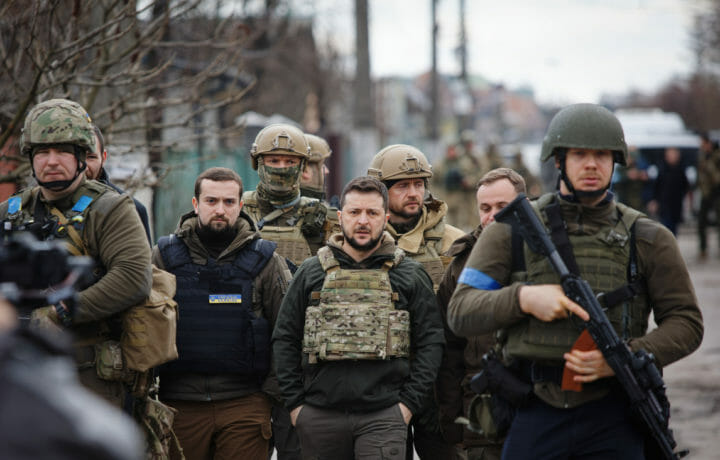Ukrainian President Volodymyr Zelensky indicated over the weekend that the Ukrainian army is prepared for a long-awaited counteroffensive against Russia. Simultaneously, he warned of mass casualties, unless Western allies provide additional military aid. Zelensky stated, “A large number of soldiers will die” if Kyiv is not provided with the tools needed, specifically to defend against Russian missile strikes. In a call for more U.S. Patriot Systems, he added that “Everyone knows perfectly well that any counteroffensive without air superiority is very dangerous.”
What Zelensky is not broadcasting is how effective the Western high-tech weaponry provided to Ukraine has been against the Russia onslaught. Fantastic capabilities from donated weaponry have been used to create wins for the highly outnumbered Ukrainian army during this war. Arguably, the world is seeing the next evolution of warfare unfold with the exponential maturation of autonomous weapons and the use of artificial intelligence (AI) on the battlefield.
As numerous discussions continue about future high tech capabilities, indicators of advancements within autonomous weaponry are visible on the Ukrainian battlefield. Rudimentary AI technology within some of the weapon system provided to Ukraine has been so effective in some cases that we are witnessing a return to World War I style trench warfare by Russian troops.
The use of Javelins and Stinger missiles with fire and forget war heads and autonomous tracking has enabled Ukrainian soldiers to successfully turn a predicted two week Russian invasion into a prolonged and deadly war. Russia, initially employing Cold War tactics and techniques, enabled Ukraine to employ high-tech anti-tank and anti-aircraft weaponry effectively, destroying tremendous numbers of Russia tanks and aircraft.
As militaries begin to embrace AI, the potential is quite terrifying. Using AI to rapidly review and the filter drone and satellite imagery is reality for the military and has been exhibited at military trade shows for over a decade. AI and autonomous weapons concerns are multifaceted. They are becoming inexpensive and even older weaponry are being enabled by AI capabilities. In turn, the lethality of the modern battlefield is growing exponentially.
Analyst point to the Shahed-136 Kamikaze Drones as an example. Russia has effectively used the inexpensive, Iranian autonomous drones against Ukraine throughout the war. These drones can loiter in place and wait for targets. Last year, Russia upgraded the drones from inertial navigation systems to satellite-based navigation systems for position information. Analysts agree the next upgrade to this inexpensive technology will include some form of AI, allowing the drones to scan the battlefield for their own targets. Launched by humans, the drones will be fully capable of operating independently to kill and destroy targets.
Concerned?
Even though technology and tactics continue to develop, this drone example represents the growing capability of weaponry being modified with AI. Autonomous weapons are already a very real and terrifying aspect of the modern battlefield today. In the future, as speed and lethality increase, there will be a heavier reliance on autonomy and AI. We will trust computers to do visual recognition and target determination, through discerning the differences between such entities as telephone poles in traffic lights.
As top technology leaders in Silicon Valley become more vocal with their AI concerns and warnings, we are simultaneously witnessing the next evolution of warfare. Bill Gates believes AI is the most revolutionary technology for decades, on par with computers, cellphones and the internet. However, the genie is out of the bottle and other technology leaders – the ones most likely would benefit the most – are scared.
The concern is the future of AI and the potential for the AI revolution to suddenly grow out of control. Elon Musk recently stated, “The pace of progress in artificial intelligence is incredibly fast….growing at a pace close to exponential. The risk of something seriously dangerous happening is in the five-year time frame. 10 years at most.”
Before his death in 2018, theoretical physicist Stephen Hawking stated, “The development of full artificial intelligence could spell the end of the human race….It would take off on its own, and re-design itself at an ever increasing rate. Humans, who are limited by slow biological evolution, couldn’t compete, and would be superseded.”
With the all the goodness that AI might bring, we must work to understand how to survive the rapid maturation of this unfolding capability.



